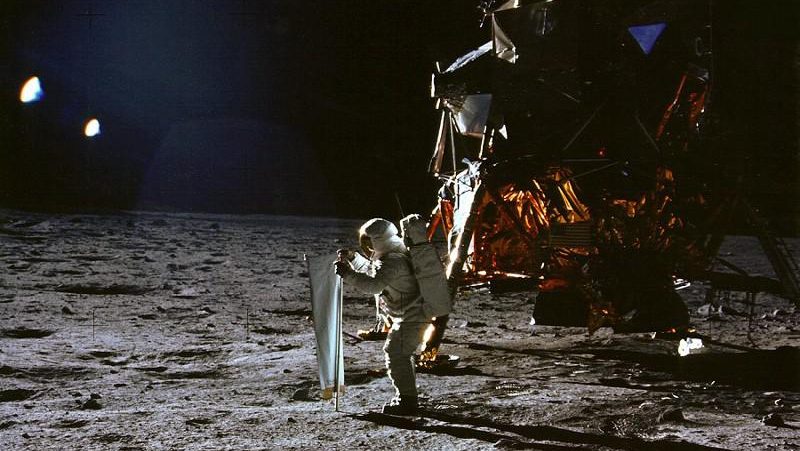Doug Malewicki is President and Chief Scientist for AeroVisions Inc., a company he founded in 1974 and incorporated in 1980 for the purpose of developing, promoting and commercializing his numerous[…]
Sign up for the Smarter Faster newsletter
A weekly newsletter featuring the biggest ideas from the smartest people
Doug Malewicki outlines some feasible game changing ideas in the realm of transportation.
Question: How would the technology you are developing lead to low-cost access to space?
Doug Malewicki: Sky Tran technology applies to many, many other fields, and especially our partner who is now – we are all licensed and business official partners with exclusive licenses, one cycle control. We could even do lower cost access to space with electronics; with this power conversion system. Greg Smedley and his genius wife, Kay, have come up with – we could build a small guide way up a mountain, say like in Hawaii. I wouldn’t mind spending some time over there. More time over there. And if you look at a regular space vehicle, 50% of the fuel is used to get up to about 50,000 feet and 1,200 miles per hour. And we could be doing electric launches that would take payloads, up to about Mach1, a little less than 1,200 mph, at 10,000 ft elevation. And then they’re working super sonic combustion ram jets. And that’s getting more feasible. And you can get out of 99% of Earth’s atmosphere and then you finally have this little rocket that would boost you out. These are micro-satellites. These are not big space shuttle-type vehicles.
Then, while the cart – the dolly that carried this supersonic ram jet up the mountain building up to speed is coasting back, you actually are regenerating capturing some of your energy. So, it makes micro-satellite launches very cheap.
The aeronautical engineers like myself who have been looking at this as a method to launch stuff into space cheaply for years, but the electronic power conversion technology we have now is really making it look practical. It’ll happen.
Question: What are some other game changing mobility ideas out there right now?
Doug Malewicki: I don’t think the Segway is one, but I think Elon Musk creating that company to build the test electric cars is one. He’s also done SpaceX. And he is doing – actually they have launched the first commercial liquid fuel paying payload ever in history by a commercial company. And he’s getting ready to launch stuff – big stuff. Vulcan 9, which will carry supplies to the Space Station so we don’t have to shoot billions of dollars to Russia, we can spend it here. And they’re also going to do a man rated capsule.
Other mobility technology is out there. There are other, what they call, personal rapid transit systems out there. A whole bunch of people with ideas, but they’re all 35-45 mph limited systems. They may work in the interim. High speed rail, forget it. You can do so much more with this because you’re not scheduled, you’re on demand, and you can just go non-stop to where you want. It’s going to make a lot more sense.
Airplanes. Everyone wants to go Mach 3. When there will be personal rockets to go from her to Europe, who knows. But some days we’ll have the Star Trek goodies. Teleportation would be great. I don’t know if anyone’s really coming close to figuring that one out.
Doug Malewicki: Sky Tran technology applies to many, many other fields, and especially our partner who is now – we are all licensed and business official partners with exclusive licenses, one cycle control. We could even do lower cost access to space with electronics; with this power conversion system. Greg Smedley and his genius wife, Kay, have come up with – we could build a small guide way up a mountain, say like in Hawaii. I wouldn’t mind spending some time over there. More time over there. And if you look at a regular space vehicle, 50% of the fuel is used to get up to about 50,000 feet and 1,200 miles per hour. And we could be doing electric launches that would take payloads, up to about Mach1, a little less than 1,200 mph, at 10,000 ft elevation. And then they’re working super sonic combustion ram jets. And that’s getting more feasible. And you can get out of 99% of Earth’s atmosphere and then you finally have this little rocket that would boost you out. These are micro-satellites. These are not big space shuttle-type vehicles.
Then, while the cart – the dolly that carried this supersonic ram jet up the mountain building up to speed is coasting back, you actually are regenerating capturing some of your energy. So, it makes micro-satellite launches very cheap.
The aeronautical engineers like myself who have been looking at this as a method to launch stuff into space cheaply for years, but the electronic power conversion technology we have now is really making it look practical. It’ll happen.
Question: What are some other game changing mobility ideas out there right now?
Doug Malewicki: I don’t think the Segway is one, but I think Elon Musk creating that company to build the test electric cars is one. He’s also done SpaceX. And he is doing – actually they have launched the first commercial liquid fuel paying payload ever in history by a commercial company. And he’s getting ready to launch stuff – big stuff. Vulcan 9, which will carry supplies to the Space Station so we don’t have to shoot billions of dollars to Russia, we can spend it here. And they’re also going to do a man rated capsule.
Other mobility technology is out there. There are other, what they call, personal rapid transit systems out there. A whole bunch of people with ideas, but they’re all 35-45 mph limited systems. They may work in the interim. High speed rail, forget it. You can do so much more with this because you’re not scheduled, you’re on demand, and you can just go non-stop to where you want. It’s going to make a lot more sense.
Airplanes. Everyone wants to go Mach 3. When there will be personal rockets to go from her to Europe, who knows. But some days we’ll have the Star Trek goodies. Teleportation would be great. I don’t know if anyone’s really coming close to figuring that one out.
Recorded on February 3, 2010
▸
4 min
—
with





